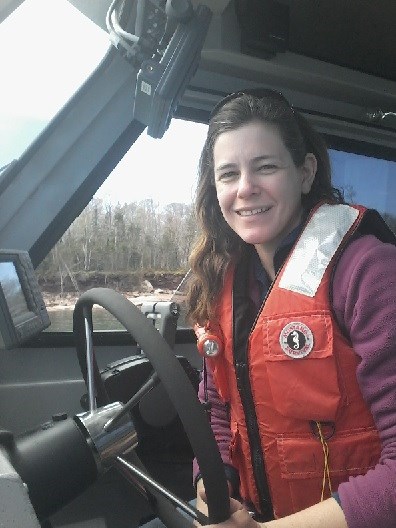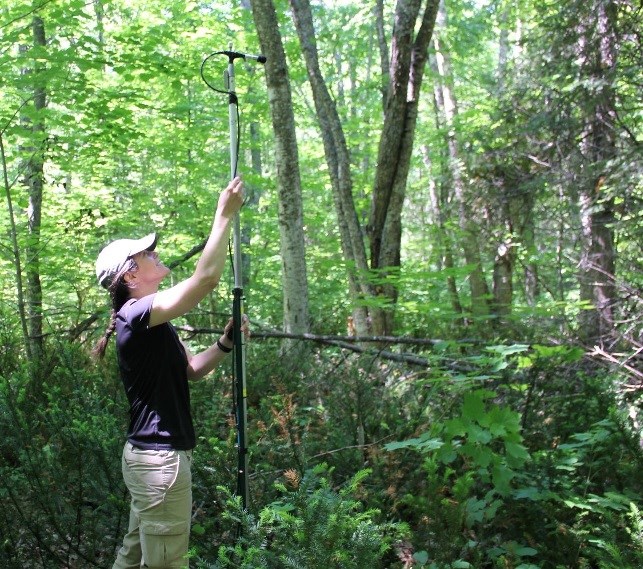
Photo by Katy Goodwin
Katy Goodwin is a research biologist based out of North Dakota State University. She is affiliated with the National Park Service’s Great Lakes Inventory and Monitoring Network which partners with national parks all around the Great Lakes region. At an early age, Katy loved animals and nature. When she was in high school, she intended to become a veterinarian. She soon realized that since she enjoyed being outdoors so much, studying wildlife was a better fit. Katy received her Bachelor's degree in Biology from Carleton College, and her Master's degree in Environmental and Conservation Sciences from North Dakota State University.
In 2001, Katy began her work with the National Park Service (NPS) as an intern at Isle Royale National Park. In the years following her internship, she continued on as an NPS volunteer and seasonal technician. After a few years working for a private environmental consulting firm, she had an opportunity to collaborate again with the NPS, first as a graduate student and now as a biologist and project coordinator. Through these various positions, Katy worked on a variety of wildlife projects including studies of birds, fish, beavers, otters, and bats. She is currently working on a project focused on acoustic monitoring of bats. Acoustic detectors are placed in different habitats at Great Lakes national parks to record the echolocation calls of passing bats. Each bat species has a different call. By examining the frequency, shape, and other characteristics of the calls, biologists can often identify which bat species was recorded. These recordings help to determine the distribution and behavior of bats. Katy says, “It's fascinating to see what we can learn just by taking the time to observe the world around us.”

Photo by Taylor Pichler
Katy always planned on working in a biology or ecology field, but she didn’t think she would be focusing on bats. She reminds future “women in science” to be open to trying different experiences. She says, “give yourself time to find out what kind of work you really enjoy, and create a strong professional network - these connections and collaborations will help you go far.”
Throughout her career, the vast majority of Katy's colleagues were respectful and supportive. That said, she did receive comments from some individuals suggesting that as a woman it would be unsafe for her to work in remote natural areas, or that she was not physically strong enough to do her job. Katy has continued to prove all these comments false, by working outside, in the national parks for most of the last nineteen years!
Last updated: August 18, 2020
